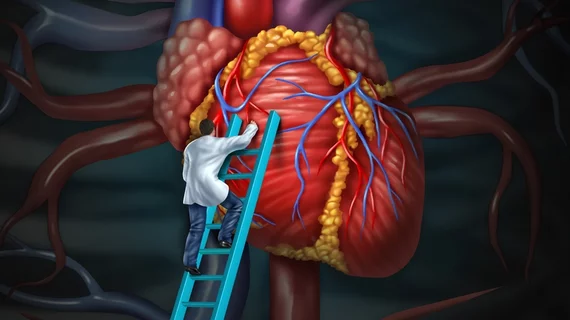Heart damage is present in a significant number of COVID-19 patients after they have been hospitalized with elevated troponin levels, according to new findings published in the European Heart Journal.
The study’s authors used MRI examinations to evaluate 148 COVID-19 patients. All patients had elevated troponin levels and were treated at one of six hospitals in London during the pandemic’s first few months. The images were obtained at least one full month following discharge, suggesting the identified damage can remain for a considerable amount of time. Forty healthy volunteers also underwent MRI scans to provide the analysis with a control group.
Overall, signs of heart damage—which included inflammation, scarring and restricted blood supply to the heart—were present in 54% of patients. The heart’s left ventricle did appear to be free of damage and functioning properly for 89% of patients.
Lead researcher Marianna Fontana, MD, PhD, a cardiology professor at University College London in the U.K., said in a statement that MRI scans allow healthcare providers to “identify different patterns of injury, which may enable us to make more accurate diagnoses and to target treatments more effectively.”
“Importantly, the pattern of damage to the heart was variable, suggesting that the heart is at risk of different types of injury,” Fontana explained. “While we detected only a small amount of ongoing injury, we saw injury to the heart that was present even when the heart’s pumping function was not impaired and might not have been picked up by other techniques. In the most severe cases, there are concerns that this injury may increase the risks of heart failure in the future, but more work is needed to investigate this further.”
Click here to read the full analysis.

